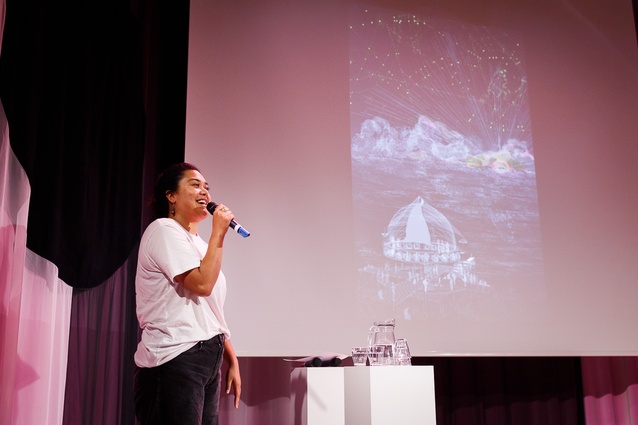Jasmax’s Icao Tiseli wins at Archiprix in Rotterdam
Last week, we reported that Jasmax architectural graduate Icao Tiseli was representing Oceania at the Archiprix International Workshop in the Netherlands from 27 November to 1 December. At the closing ceremony, just six projects were selected as prize winners from the 359 entered and Tiseli’s ‘Mapping the Feke’ was one of them.
All 359 submitted graduation projects were reviewed and discussed by the jury, made up of Rahel Shawl, Aric Chen, Marlene Wagner, Nathalie Jean-Baptiste and Stacy Passmore. The jury said it was impressed with the overall quality of the projects, “to say nothing of the range of questions they ask and the breadth of approaches to architecture that they take.”
The jury then nominated 22 projects for an award and the six winners selected were announced at the Award ceremony on 2 December in the Nieuwe Instituut in Rotterdam.
Along with Tiseli’s win for Mapping the Feke, the winners of the 11th edition of Archiprix International were Sebastián León, Cinthia Olate and Constanza Jara from Universidad Autonoma, Arquitectura, Temuco, Chile for CHOYÜ-FEN PARK; María Martínez-Morón from Universidad Europea de Madrid, Escuela de Arquitectura, Ingeniería y Diseño, Madrid, Spain for Silk-Skin City; Andrew Zi Hang Law from University of Glasgow/The Glasgow School of Art, Mackintosh School of Architecture, Glasgow, Scotland for The Ark of Antwerp; Tamar Ofer from Bezalel Academy of Art and Design, Architecture, Jerusalem, Israel for Towards a New Architect; and Toby Fong from The National University of Singapore, Department of Architecture, Singapore for wild [ life ] nomad bootcamp_.
Tiseli said one jury member described the projects as falling within two broadly different categories: “What stands out are two kinds of projects. First, the ones that respond to the needs of underserved and vulnerable populations. Those who suffer from all sorts of injustice as well as environmental risks or social displacement. These projects stand out because they had to go deeper to forge new forms, to line up and reimagine ways that are just, safe and sustainable. The second type are projects that go back to basics. They were exquisitely simple, yet they reminded us of how intimate our relationship with architecture is and how important it is to pay atention to ‘needs’.”
You can read further on the workshop and Tiseli’s thesis project here.










